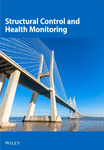Application of angular-mass dampers to base-isolated benchmark building
Abstract
The angular-mass damper referred herein is a wheel that has concentrated mass on its perimeter. The rotational inertia of the wheel is employed to dampen the relative acceleration between two joints. The application of this kind of damper to civil engineering structures would be practical since the damper works passively. Since the angular mass is much more significant than the translational mass, the rotational mass damper does not significantly increase the translational earthquake-induced force. To study the effectiveness of the device in the seismically excited structures, the device is applied to the base-isolated benchmark building. The results show that the device can further reduce the responses of the already dampened benchmark building. Copyright © 2008 John Wiley & Sons, Ltd.




